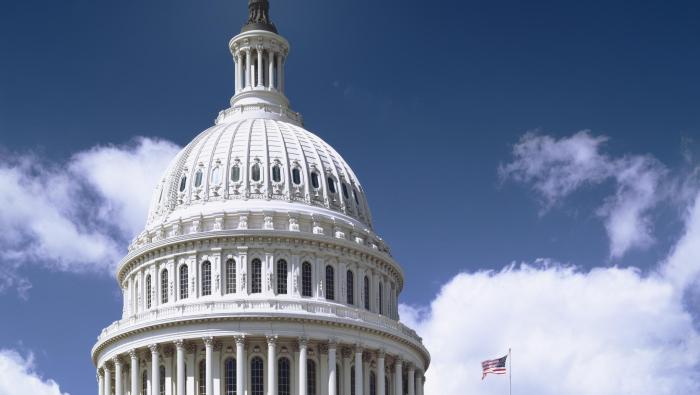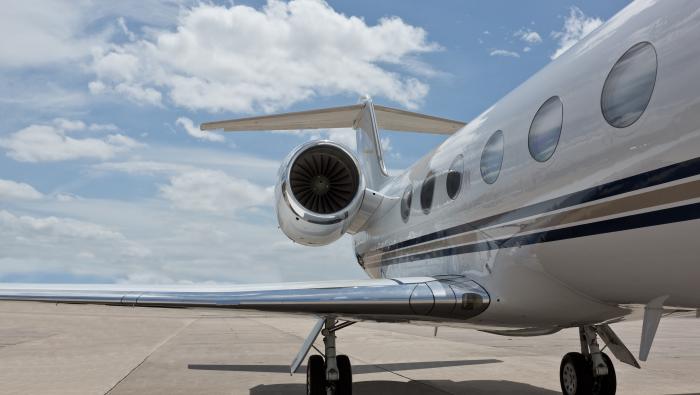Updated with reaction from Aerospace Industries Association.
Choosing aviation as the launch transportation mode for his infrastructure plans, President Donald Trump on June 5 painted a bleak picture of the state of the U.S. air traffic control system. Ignoring progress by the Federal Aviation Administration’s ongoing NextGen program to modernize the ATC system, he accused the previous Obama administration of misspending on the effort.
“The FAA has been trying to upgrade our nation’s air traffic control system for a long period of years. But after billions and billions of tax dollars spent, and the many years of delays, we’re still stuck with an ancient, broken, antiquated, horrible system that doesn’t work,” Trump told an audience assembled in the East Room of the White House. “The previous administration spent over $7 billion trying to upgrade the system and totally failed. Honestly, they didn’t know what the hell they were doing—a total waste of money.”
The White House event reinforced legislation the House Transportation Committee is developing to assign the FAA’s responsibility for ATC to a separate entity, a plan spearheaded by Rep. Bill Shuster (R-Penn.), the committee’s chairman. Trump and others who spoke offered broad descriptions of what that entity might look like—according to the president, it would be a “self-financing, nonprofit organization” that would not require taxpayer funding. Proposed FAA reauthorization legislation would also maintain support for rural communities and small airports, he said, an apparent reference to the Essential Air Service program that subsidizes airline service to underserved areas.
“For too many years our country has tolerated unacceptable delays at the airport, long wait times on the tarmac and a slowing of commerce and travel that costs us billions and billions of dollars in lost hours and sales,” said Trump. “We will launch this air travel revolution by modernizing the outdated system of air traffic control. It’s about time.”
Joining Trump in making the announcement were Vice President Mike Pence, Transportation Secretary Elaine Chao and three former Republican transportation secretaries—Elizabeth Dole, James Burnley and Mary Peters. Among lawmakers in the audience were Shuster, House majority leader Kevin McCarthy (R-Calif.) and Sen. Ted Cruz (R-Texas).
Chao said the proposed reforms will accelerate the deployment of new technology and usher in a new era of enhanced safety and ATC system performance. But she made a point of complimenting the FAA’s controller workforce, most of which is unionized.
“We want to give a shout-out to these dedicated professionals, who are the best in the world,” she said. “Separating air traffic control from the red tape and budget uncertainties of the current system will end the cycle of delay and disruption that has not served them well. This new entity will be a nonprofit, coop organization where all surpluses will be reinvested in the system.”
In one of the first responses to the Trump administration announcement, the Air Line Pilots Association (Alpa) said its member pilots and the National Air Traffic Controllers Association representing controllers “must hold a role in governance and oversight” of any new ATC entity. “In addition, the system must safeguard the current Federal Aviation Administration employer-employee relationship that has proven fundamental to the safety of U.S. air transportation,” Alpa stated.
During opening remarks he gave before introducing Trump, Pence drew laughter when he referred to the runway excursion he experienced in October while landing aboard a chartered Boeing 737-700 at New York’s La Guardia Airport. “President Trump’s action today will enhance the safety and precision of our air travel in the United States,” said Pence. “And as I can attest from first-hand experience, having more precise landings in America is a good thing.”
The Aerospace Industries Association (AIA) which brands itself as “The Voice of American Aerospace and Defense,” defended progress on the FAA’s NextGen modernization effort in a statement issued on June 6.
Boeing CEO Dennis Muilenburg chairs the AIA executive committee, which includes representatives of Raytheon, Harris and Northrop Grumman. David Melcher, the association’s president and CEO, previously led Exelis, the company the FAA chose in 2007 to build the ground radio stations for automatic dependent surveillance-broadcast (ADS-B) aircraft position tracking. Harris acquired Exelis in 2015 and now manages the ADS-B system.
“Our industry worked closely with the FAA to implement high-priority NextGen capabilities,” the AIA said. “We’ve had success generating near-term benefits in four areas: multiple runway operations, performance-based navigation, surface operations and data communications. Overall, the FAA expects NextGen to deliver $160.6 billion in benefits through 2030. Together, we are creating a healthy and sustainable National Airspace System that solves the problems of traffic and congestion in our busy airspace while saving fuel, reducing carbon emissions and increasing on-time arrivals and departures.”
If FAA reauthorization includes separating the agency’s ATC function, the new entity should include participation by key interest groups, “including equipment manufacturers and firms with air traffic management development and manufacturing expertise” and also ensure the FAA’s Aircraft Certification Service is not adversely affected, the AIA said.







